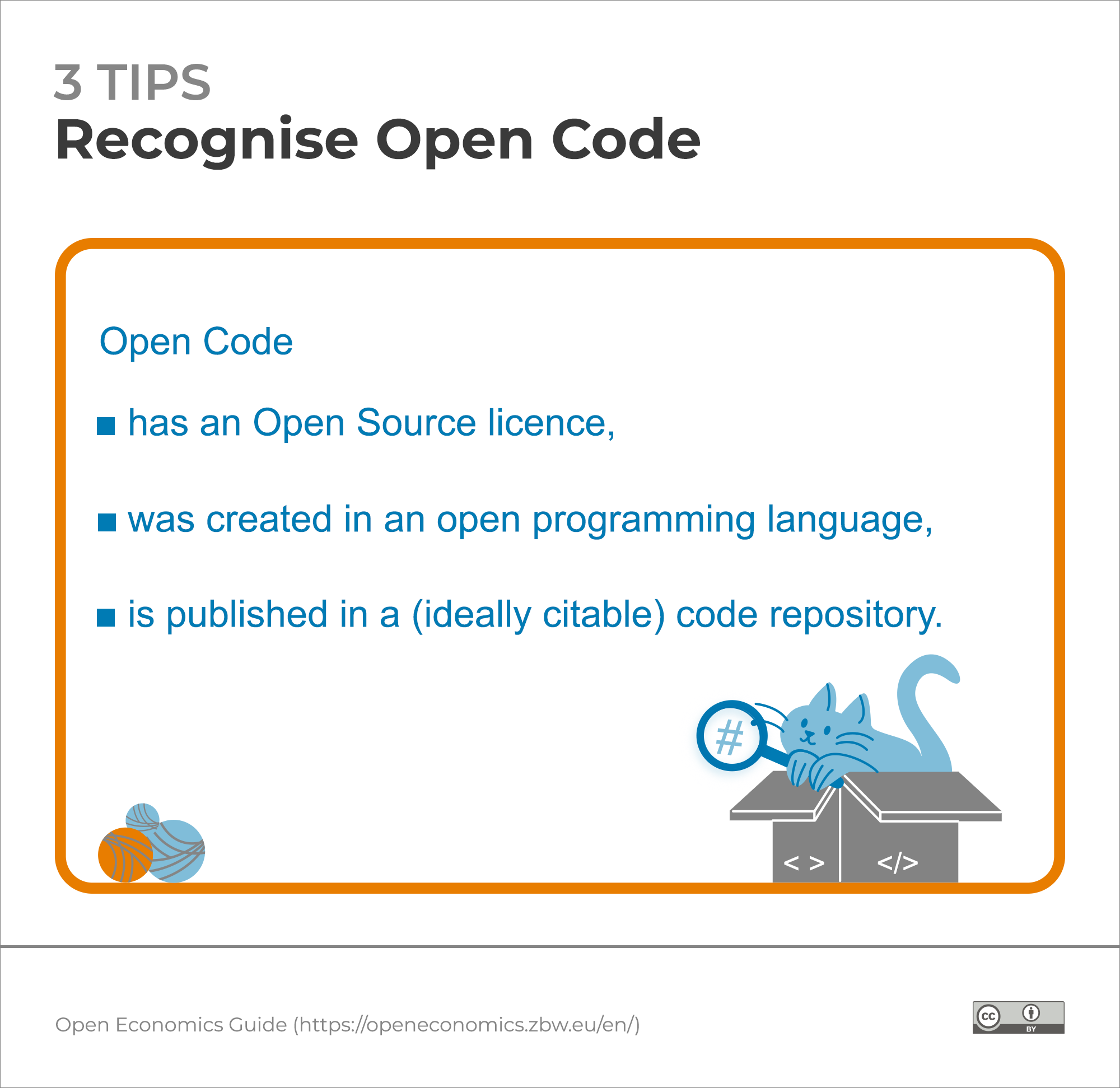How to Recognise Open Code
A key requirement for Open Code is that the source code is openly accessible. Another important prerequisite for the reusability of Open Code is that it has been made freely available under an open source licence, which allows others to access, view, use, modify and redistribute it. On platforms such as GitHub and Zenodo, information about the licence is also part of the metadata. However, the licence text can also be placed in a file with a name such as LICENSE.txt (or LICENSE.md or LICENSE.rst) in the root directory of the source code or a code repository, but sometimes also in a README file.
However, it is not enough for the source code to be available as Open Source; the programming language used and the software necessarily should also be free or Open Source in order to be able to reuse Open Code easily. This is the case, for example, if the programming language R is used because it is itself Open Source, including all programme libraries (collection of already written programme routines) and the compiler (translates source code into an executable form). However, this is not the case for Excel applications, for example, as this is commercial software and the file format is not open.
In short: Ideally, Open Code can be recognised by the fact that it 1. has a corresponding Open Source licence, 2. was created in an open programming language and 3. is best published in a (ideally citable) code repository.
